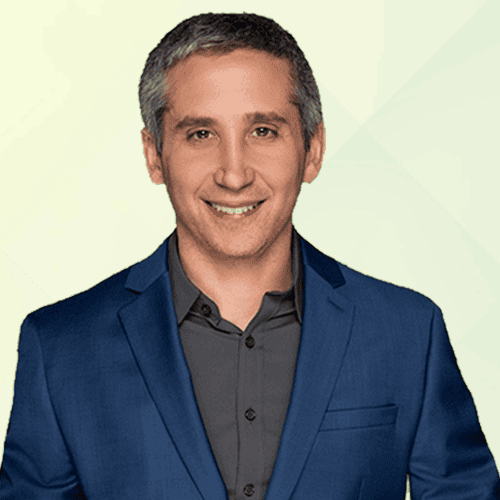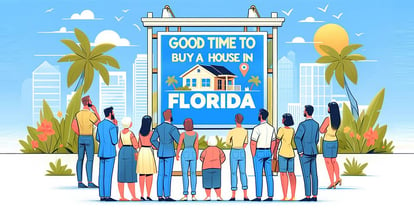Reverse Mortgage vs HELOC Comparison for 2024
As a homeowner who is at least 62 years old, you have the option to convert your home equity into cash to cover living expenses, healthcare costs, or home renovations through a reverse mortgage. However, you also have other options like home equity lines of credit (HELOCs).
Here is a brief overview of these three loan products and their differences to help you choose the one that suits your needs.
-
Reverse mortgages do not require monthly payments to the lender; instead, the lender pays you, and they recover the money when the home is eventually sold. Any remaining equity goes to you or your heirs.
- HELOCs are similar to credit cards, allowing you to borrow from your credit line as needed and only pay interest on what you use. HELOCs typically have lower variable interest rates than credit cards because they use your home as collateral.
Key Takeaways
-
Unlike a first mortgage, reverse mortgages allow homeowners to receive payments from the lender instead of making monthly payments to the lender.
-
With a reverse mortgage, the lender recovers the money paid out by eventually selling the home, and any remaining equity goes to the homeowner or their heirs.
-
HELOCs allow homeowners to draw on their line of credit as needed, and they only pay interest on the amount used.
- Each of these loan options has its advantages and disadvantages, and homeowners should consider their specific circumstances before choosing one.
Table of Contents
Reverse Mortgage
A reverse mortgage differs from a traditional mortgage in that the lender pays you, based on a percentage of your home's value, instead of you making payments to the lender.
As time passes, your debt increases due to payments made to you and interest that accrues, while your equity decreases as the lender purchases more of it. It is crucial to understand the details of this loan before signing up.
Here's what you need to know:
-
While you hold the title to your home, the loan becomes due as soon as you move out of your home for more than a year, sell it, pass away, or fail to pay property taxes or insurance, or if the home falls into disrepair.
-
The lender sells the home to recover the money that was paid out to you and any fees, and any remaining equity goes to you or your heirs.
-
Reverse mortgage scams often target older adults, so it's important to scrutinize the fine print with the help of an attorney or tax advisor and not respond to unsolicited advertisements.
-
If both spouses are on the mortgage, the bank cannot sell the house until the surviving spouse dies, or certain situations occur, such as tax or insurance delinquency or the house falling into disrepair.
-
Drawbacks to consider include high closing costs and the possibility of your children not being able to inherit the family home if they can't repay the loan.
- Interest on a reverse mortgage accumulates until the mortgage is terminated.
Home Equity Line of Credit (HELOC)
HELOC, or home equity line of credit, provides homeowners with the flexibility to borrow funds as they need them, up to a predetermined credit limit. Similar to credit cards, HELOCs allow homeowners to borrow only the amount they need, and pay interest only on the withdrawn amount.
Compared to a standard home equity loan, a HELOC typically has a variable interest rate, which means that the payment amount can fluctuate. On the other hand, a home equity loan has a fixed interest rate, which guarantees a consistent payment amount.
It’s worth noting that under the Tax Cuts and Jobs Act of 2017, the interest paid on home equity loans and HELOCs is no longer tax-deductible unless the funds are used for home renovations or improvements, and this change is effective from tax years 2018 to 2025.
One of the most significant benefits of both home equity loans and HELOCs is that your home remains an asset for you and your heirs, even though it acts as collateral for the loan. However, it's crucial to remember that failing to make payments could result in losing your home to foreclosure.

Key Differences Between Reverse Mortgages and HELOCs
When it comes to converting home equity into cash, homeowners have multiple options, including reverse mortgages and HELOCs.
However, these loan products differ in several aspects, such as disbursement, repayment, and eligibility requirements.
To help you choose the right option, here are the main distinctions among these loans.
Disbursement
When it comes to disbursement, reverse mortgages offer several options to choose from, such as monthly payments, a lump-sum payment, a line of credit, or some combination of these.
The borrower can opt to receive a monthly payment to supplement their income, receive a lump-sum payment to cover a large expense, or establish a line of credit to withdraw from as needed.
One of the benefits of a reverse mortgage is that the borrower can customize their payment plan to suit their financial needs.
On the other hand, a HELOC offers a credit line that can be used on an as-needed basis, up to a pre-approved credit limit.
A HELOC comes with a credit card, debit card, or a checkbook to make accessing the credit line quick and easy. This option allows borrowers to borrow only what they need and avoid accumulating unnecessary debt.
It's important to note that both reverse mortgages and HELOCs have fees and costs associated with them. Reverse mortgages typically come with higher fees due to the required mortgage insurance premiums and other associated fees.
HELOCs, on the other hand, may have lower fees and closing costs, but the interest rates are generally higher and can vary over time.
Repayment
A reverse mortgage is a deferred repayment loan that doesn't require monthly payments. Instead, the loan becomes due when the borrower becomes delinquent on property taxes or insurance, keeps the home in disrepair, dies, or moves out of the home.
At that point, the borrower or their heirs must pay the loan balance or sell the home to satisfy the debt.
HELOCs have a draw period, which allows borrowers to withdraw funds as needed up to a pre-approved credit limit. During the draw period, borrowers only need to make minimum monthly payments covering the interest charged on the outstanding balance.
However, once the draw period ends, borrowers must repay the principal, and the repayment period begins. The monthly payments during this period increase significantly and are based on the balance and variable interest rate.
Age and Equity Requirements
For a reverse mortgage, borrowers must be at least 62 years old and have either paid off their home or have a small mortgage balance. The amount of money they can borrow depends on the age of the borrower, the value of the home, and the interest rate.
As the borrower receives payments from the reverse mortgage, the loan balance increases, and the equity in the home decreases over time.
In contrast, there is no age requirement for a HELOC, but borrowers must have at least 20% equity in their home. This means that the amount they can borrow will depend on the value of their home, minus any outstanding mortgage balance.
With a HELOC, borrowers can draw on their credit line as needed, up to their approved limit, and pay interest only on the amount borrowed.
While a HELOC may be a good option for homeowners who do not meet the age requirement for a reverse mortgage, it is important to consider the repayment terms carefully.
With a HELOC, the repayment period will typically begin after the draw period, and the monthly payments may increase significantly.
Additionally, because the interest rate on a HELOC is variable, the monthly payment amount can change over time.
Credit and Income Status
For reverse mortgages, income requirements are not mandatory, but borrowers must demonstrate their ability to make full and timely payments for ongoing property charges such as property taxes and insurance.
Lenders may check credit scores and income levels to evaluate borrowers' creditworthiness.
In contrast, HELOCs require proof of steady income and a good credit score to be approved. This is because a HELOC is a type of revolving credit and lenders need to ensure that borrowers have the financial capability to repay the debt.
Lenders may also look at debt-to-income ratios, employment history, and other factors to determine if borrowers can handle the additional debt.
Having a good credit score is important when applying for a HELOC because the interest rate is based on the borrower's creditworthiness. The better the credit score, the lower the interest rate and the more favorable the loan terms.
Similarly, borrowers with a stable income are considered more reliable and are more likely to be approved for a HELOC with lower interest rates.
Tax Advantages
Before the Tax Cuts and Jobs Act of 2017, interest on home equity debt, including HELOCs, was partially or entirely tax-deductible.
However, this deduction is no longer available for tax years 2018 to 2025, except for cases where the money is used for home renovations or similar activities on the property that secures the loan.
On the other hand, with a reverse mortgage, the money you receive is not taxable income, and you can deduct the interest paid on the loan, as long as the loan is secured by your primary residence.
This can be a significant advantage for borrowers who need to supplement their retirement income and want to minimize their tax liability.
It's important to note, however, that a reverse mortgage can affect your eligibility for certain government benefits, such as Medicaid, and may have an impact on your tax bracket.
Therefore, it's essential to consult with a financial advisor or tax professional to understand the potential tax implications of a reverse mortgage.
In summary, while HELOCs may offer tax benefits for home improvement projects, a reverse mortgage can be a tax-efficient way to access your home equity without creating taxable income.
However, both options come with potential risks and should be carefully considered with the guidance of a financial professional.
Which Is the Cheapest - Reverse Mortgage or HELOC?
HELOCs generally have fewer or no fees and lower closing costs compared to reverse mortgages. However, HELOCs usually come with variable interest rates, which means the interest rate and monthly payments can increase over time.
On the other hand, reverse mortgages typically have higher closing costs due to mandatory counseling sessions and upfront mortgage insurance premiums.
However, reverse mortgages offer fixed interest rates, which means the interest rate and monthly payments remain the same throughout the life of the loan.
It is important to note that both reverse mortgages and HELOCs can come with additional fees, such as appraisals, title insurance, and servicing fees, which should be carefully considered when comparing costs.
A HELOC may be a better choice if you need a smaller amount of money and can pay it back quickly, while a reverse mortgage may be a better option if you need a larger sum of money and do not want to make monthly payments.
Which Is the Fastest Money - Reverse Mortgage or HELOC?
When it comes to accessing funds quickly, a HELOC tends to be the faster option compared to a reverse mortgage. Although HELOCs require a credit check and income verification, the application process is generally straightforward and can be completed relatively quickly.
Once approved, borrowers can access their credit line as needed, typically through a debit card or checkbook.
In contrast, reverse mortgages require mandatory counseling sessions with an approved counselor, which can take time to schedule and complete.
Additionally, reverse mortgages require an appraisal of the home and a thorough underwriting process, which can take several weeks or even months.
This is due in part to the fact that reverse mortgages are designed for older homeowners and are subject to additional regulatory requirements to ensure that borrowers fully understand the implications of taking out the loan.
Bottom Line
Both reverse mortgages and HELOCs offer homeowners the opportunity to convert their home equity into cash. However, the decision to choose one over the other depends on several factors such as age, equity, credit, income, tax benefits, fees, and processing time.
If you are considering a HELOC, you should have a temporary need for cash, a good credit score, and sufficient income to meet all financial obligations.
On the other hand, if you are a retired homeowner looking for a steady stream of income to supplement your retirement savings and do not want to leave your home to your heirs, then a reverse mortgage may be the best option for you.
If you are a homeowner in Florida, MakeFloridaYourHome can provide you with expert guidance and personalized service to help you make an informed decision about your mortgage options. Contact us today to schedule a consultation and explore your options.
With over 50 years of mortgage industry experience, we are here to help you achieve the American dream of owning a home. We strive to provide the best education before, during, and after you buy a home. Our advice is based on experience with Phil Ganz and Team closing over One billion dollars and helping countless families.

About Author - Phil Ganz
Phil Ganz has over 20+ years of experience in the residential financing space. With over a billion dollars of funded loans, Phil helps homebuyers configure the perfect mortgage plan. Whether it's your first home, a complex multiple-property purchase, or anything in between, Phil has the experience to help you achieve your goals.


 By
By  Edited by
Edited by 






